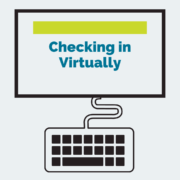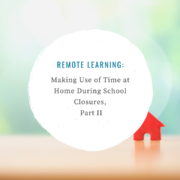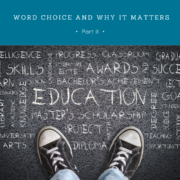Checking In Virtually
Now that the school year has come to a screeching halt for many students, digital learning and online instruction is becoming the norm. However, in addition to content-specific questions and online discussion threads, educators can also take this time to remotely check in on students’ well-being.
It goes without saying that this is a crazy time full of many uncertainties. For children and teens, this global pandemic can be even more troubling, especially since the adults—the ones with all the answers—seem to have no answers at this point. One way that teachers can lend an ear, even if digitally, is to post daily check-ins using a platform like polleverywhere and Google Classroom.
With Google Classroom, students are likely already enrolled in their teachers’ courses and may be set up to receive messages from Google when teachers post. Therefore, the process for getting started with daily check-ins is fairly seamless. Teachers can simplify the process initially by creating a Google form that asks students to choose an emoji that represents how they are feeling today. This process takes mere minutes to set up and can provide key insight as to how children are doing at home during quarantine. Educators have many options within Google forms in terms of answer responses. For a simple poll, teachers can ask the following questions:
- Using the rating scale, rate your level of comfort/understanding of the poem I posted yesterday.
- Using the drop down options, select the emoji that corresponds to your mood right now.
- Did you have enough food to eat today, yes or no?
- Based on our digital packet, which concept are you finding to be the most difficult? Select all that apply from the drop down menu.
If teachers want to get more of a detailed response from students, they can select the “short answer” option in Google forms when asking for responses. One idea for teachers to check on students’ emotional well-being is to utilize the short answer function. Ask students to list their pit and peak or rose and thorn of the day. In essence, teachers are aiming to identify what is going well at home and what students may be struggling with more specifically. Google also provides options for teachers to provide an example of their own response. This allows students to see that everyone is in this together—we are all experiencing highs and lows while schools are closed.
Furthermore, educators can then use this data to reach out to students or families directly who may be struggling more significantly. Whether due to a lack of resources or the emotional impacts of isolation, teachers can relay these concerns to school administrators and/or community members to provide necessary resources and aid to families based on their needs.
Another way to utilize these web-based platforms is to open assignment threads to allow students to post back and forth to one another. Some English teachers are finding that they are still able to practice book talks and literature circle conversations during the school closures using these features.
A word of caution, since teenagers will be teenagers, especially when cooped up at home—teachers should set clear guidelines for participation. Make sure students know that their posts will be viewed by all members of the Google classroom and that the instructor (teacher) has the option to revoke any individual’s posting privileges if necessary. Finally, ask parents to join in the classroom discussion threads, posts, polls, etc. Google Classroom has an easy option to “invite guardians” through MCPS, so with one click, parents can join in the discussion as well!













